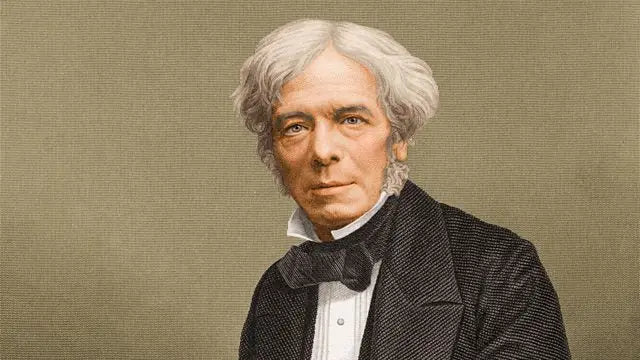Born 1791, Newington Butts, London
Died 1867, Hampton Court Palace, Molesey
Born into a very poor family in South London the young Faraday received what can best be described as basic education. At the age of 14, he was apprenticed to a local bookbinder and over the next few years would not only bind the books but curiosity got the better of him and he would frequently read them. It was during this time that a lot of the books he read were science-based and he would start to invest some of his small wages into purchasing science equipment and copying the experiments he read about.
At the age of 21, he attended four lectures at the Royal Institution given by Sir Humphrey Davy. Another eminent scientist of his time, at the end of the lectures Faraday, asked Davy for a job but was politely refused. This did not deter Faraday and subsequently sent Davy a 300-page book based on the lectures he had attended. The book was well received and after Davy damaged his eyesight in an accident he appointed Faraday as one of his assistants at the Royal institute.
A year later, Faraday was invited to accompany Davy and his wife on an 18-month European tour, taking in France, Switzerland, Italy, and Belgium and meeting many influential scientists. On their return in 1815, Faraday continued to work at the Royal Institution, helping with experiments for Davy and other scientists. In 1821 he published his work on electromagnetic rotation (the principle behind the electric motor). He was able to carry out little further research in the 1820s, busy as he was with other projects. In 1826, he founded the Royal Institution's Friday Evening Discourses and in the same year the Christmas Lectures, both of which continue to this day. He himself gave many lectures, establishing his reputation as the outstanding scientific lecturer of his time.
In the early 1840s, Faraday's health began to deteriorate and he did less research. He died on 25 August 1867 at Hampton Court, where he had been given official lodgings in recognition of his contribution to science. He gave his name to the 'farad', originally describing a unit of electrical charge but later a unit of electrical capacitance.
1821: Discovery of Electromagnetic Rotation
 |
Although Faraday can be credited with many scientific discoveries it is his research into the electromagnetic rotation is the one we shall briefly look at here. In 1820 Hans Christian Orsted announced the discovery that an electric current flowing through a wire produces a magnetic field. With this knowledge and additional work from Andre-Marie Ampere with regards to magnetic fields, Faraday was the first to understand the concept of polarity. If a magnetic pole could be isolated a wire carrying an electric current would invariably move in a circle. This concept was created and proven with the apparatus on the left and had shown that electrical energy can be transformed into mechanical energy. This device is the first of all-electric motors. |
Faraday quotes
“Nothing is too wonderful to be true if it be consistent with the laws of nature.”
“No matter what you look at, if you look at it closely enough, you are involved in the entire universe.”
“Shall we educate ourselves in what is known, and then casting away all we have acquired, turn to ignorance for aid to guide us among the unknown?”

